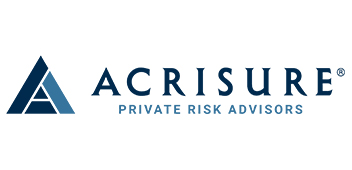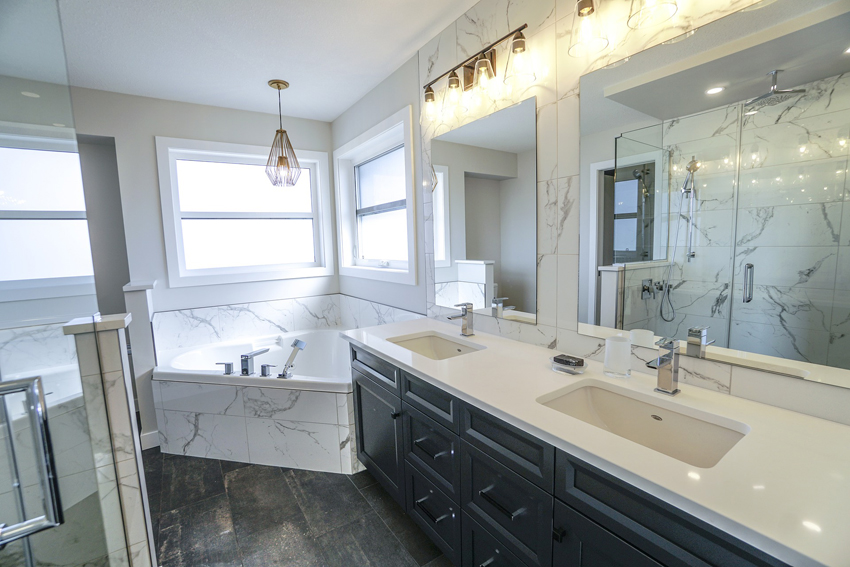Although water damage is the most frequent cause of loss to luxury homes1, most people don’t appreciate the specific impact it could have on them—and therefore don’t take proactive steps to avoid it. Following are the water damage assumptions we encounter most often, along with the real facts based on our analysis of thousands of water damage claims. Anticipating and dispelling these notions up front will hopefully help you sidestep costly losses (and headaches) in the future.
MYTH: “It won’t happen to me”
Internal plumbing system water losses (from pipes, appliances or fixtures) are the number-one cause of damage to luxury homes. Water damage occurs more frequently than fire, theft, flooding or any other type of home loss. Most people know someone who has had a water loss if they haven’t experienced one firsthand. Those in the northern parts of the U.S. are particularly vulnerable, when frequent and prolonged periods of severe cold cause hundreds of frozen pipes at a time.
MYTH: “I had water damage in my home. But now that we fixed the cause, it won’t happen again.”
It’s understandable to consider water damage to be an unlucky, one-off event. However, our data revealed the opposite to be true. Claims analysis shows that a home that has had an internal system water loss is at least twice as likely to have another water loss, even after the original repairs were made. In some cases, it’s up to 3.5 times more likely to happen.
MYTH: “A water loss won’t really impact me, because my insurance company pays for the damages.”
Because water damage costs in most cases will be covered by one’s insurance company, people assume there will be little-to-no additional impact to their lives. However, a reimbursement check cannot restore sentimental or one-of-a-kind items ranging from children’s artwork and cherished letters to heirlooms and other original documents. Family members will have to live through disruptive repairs or be displaced from home altogether. It also can take weeks to replace furniture and other damaged belongings—particularly when items are custom-made. In fact, the average water damage claim duration for a luxury home is between two and three months. Increasing concerns about mold issues are also adding to the time required for remediation.
MYTH: “I have a high-end home, so I’m less likely to have a problem.”
Water damage claims have been on the rise for the last decade, particularly among those with a high net worth. Luxury homes inherently have more at risk, as they typically have more than 40 water points in the home: multiple bathrooms and numerous water-based appliances. The more water points in a home, the higher the loss frequency. Each water point represents an opportunity for failures linked to connection points, supply hoses, valve assemblies, as well as the fixtures and appliances themselves.
MYTH: “Water damage isn’t that expensive to repair.”
In addition to increased loss frequency, luxury homes typically endure much higher loss severity. These properties often feature customized wall, ceiling and floor finishes, custom trim and woodwork, imported materials, expensive electronics with extensive wiring, and bespoke amenities like wine cellars, golf simulator rooms and home theaters. Even a little water in the wrong place can causes a catastrophic loss. For example, one section of damaged custom wood flooring may require an entire level of the home to be replaced.
MYTH: “There’s nothing I can do to prevent water damage.”
There are many ways in which homeowners can combat the likelihood and severity of water damage. Here are a few recommendations:
Home Maintenance
Implement scheduled maintenance plans for HVAC systems, plumbing systems (including water heater review), fire sprinkler systems (done by a certified fire sprinkler company), sump pump systems and roofing systems.
Use steel-braided hoses on washing machines rather than rubber, and replace them every ten years.
Regularly inspect water supply lines under sinks and appliances. Replace inexpensive plastic tubing and valves with metal or steel-braided connections.
Water Damage Mitigation Devices
Install automatic shutoffs in HVAC air handler drip trays in case drain lines clog and back up.
Install individual appliance shutoff systems on washing machines, hot water heaters or dishwashers.
If they start to leak for any number of reasons, the water to that appliance will shut off immediately.
Install centrally monitored water sensors at water points in the house to send an alert if anything leaks or overflows.
The best protection is to install a whole house shutoff device, which acts as a 24/7 security guard for the home. It senses leak anywhere in the home, including pipes, fixtures and appliances, and shut the water before damage occurs. Many devices are IoT enabled, with apps that notify users of issues such as leaks, freezing temperatures or unusual water use.
Other Proactive Best Practices
During subfreezing temperatures, vacant homes should be checked twice a day. Also implement a cold weather protocol, such as opening vanity doors to allow heat in, allowing a slow drip of water in bathrooms most susceptible to freezing, and making sure heat is kept at 65 degrees or more.
Install a basement sump pump. If one is already in place, make sure it has a backup power supply.
If planning renovations, consider installing additional loss prevention measures that are best done during construction.
MYTH: “Whole house shutoff systems are too complicated.”
Whole house shutoff devices provide the best protection from a catastrophic internal system water loss. Initially there may be a learning curve, as with any new home, but most devices are now Wi-Fi connected and app enabled, making them more user friendly than ever. AIG Private Client Group surveyed a group of customers who had installed automatic, whole house shutoffs over a nine-year period. More than 92% said they would install one again. Additionally, the devices reportedly caught leaks in more than 32% of the homes involved in the study, preventing extensive damage outright. An insurance industry report found similar results, indicating that whole house shutoffs can reduce up to 93% of all internal system water claims.2
MYTH: “I’ve finished the repairs on my home, so my water damage worries are over.”
Homeowners have a responsibility to try and protect against the next loss. More carriers are seeing similar trends regarding water damage recidivism. As a result, some are not renewing homes with multiple water losses, or are requiring the installation of mitigation devices. A California Insurance Department study revealed that water damage causes non-renewals more frequently than any other type of claim.3
For more information, please contact your independent insurance advisor or visit www.aig.com/pcg.
1. According to AIG Private Client Group homeowners insurance loss data reported between 2014-2017. AIG Private Client Group is a division of the member companies of American International Group, Inc. (AIG).
2. https://www.claimsjournal.com/news/national/2011/04/08/184301.html
3. https://www.kiplinger.com/article/insurance/T028-C001-S001-dangers-of-water-damage-claims.html
AIG Private Client Group is a division of the member companies of American International Group, Inc. (AIG). Policies are underwritten by member companies of AIG, including AIG PROPERTY CASUALTY COMPANY.

